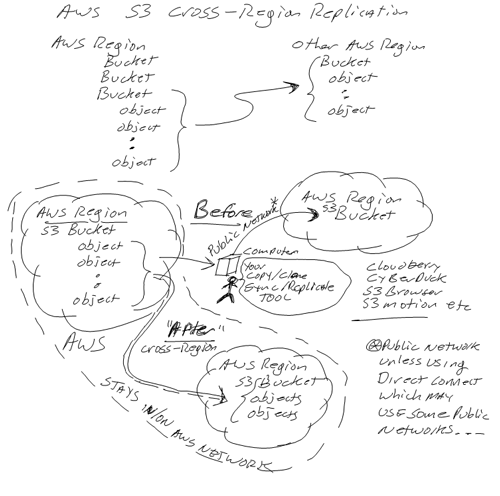3D XPoint server storage class memory SCM

Updated 1/31/2018
Intel Micron 3D XPoint server storage NVM SCM PM SSD.
This is the second of a three-part series on the recent Intel and Micron 3D XPoint server storage memory announcement. Read Part I here and Part III here.
Is this 3D XPoint marketing, manufacturing or material technology?
You can’t have a successful manufactured material technology without some marketing, likewise marketing without some manufactured material would be manufactured marketing. In the case of 3D XPoint and its announcement launch, their real technology shown, granted it was only wafer and dies as opposed to an actual DDR4 DIMM or PCIe Add In Card (AIC) or drive form factor Solid State Device (SSD) product. On the other hand, on a relative comparison basis, even though there is marketing collateral available to learn more from, this was far from a over the big-top made for TV or web circus event, which can be a good thing.

Wafer unveiled containing 3D XPoint 128 Gb dies
Who will get access to 3D XPoint?
Initially 3D XPoint production capacity supply will be for the two companies to offer early samples to their customers later this year with general production slated for 2016 meaning early real customer deployed products starting sometime in 2016.
Is it NAND or NOT?
3D XPoint is not NAND flash, it is also not NVRAM or DRAM, it’s a new class of NVM that can be used for server class main memory with persistency, or as persistent data storage among other uses (cell phones, automobiles, appliances and other electronics). In addition, 3D XPoint is more durable with a longer useful life for writing and storing data vs. NAND flash.
Why is 3D XPoint important?
As mentioned during the Intel and Micron announcement, there have only been seven major memory technologies introduced since the transistor back in 1947, granted there have been many variations along with generational enhancements of those. Thus 3D XPoint is being positioned by Intel and Micron as the eighth memory class joining its predecessors many of which continue to be used today in various roles.

Major memory classes or categories timeline
In addition to the above memory classes or categories timeline, the following shows in more detail various memory categories (click on the image below to get access to the Intel interactive infographic).

Via: https://intelsalestraining.com/memory timeline/ (Click on image to view)
What capacity size is 3D XPoint?
Initially the 3D XPoint technology is available in a 2 layer 128 bit (cell) per die capacity. Keep in mind that there are usually 8 bits to a byte resulting in 16 GByte capacity per chip initially. With density improvements, as well as increased stacking of layers, the number of cells or bits per die (e.g. what makes up a chip) should improve, as well as most implementations will have multiple chips in some type of configuration.
What will 3D XPoint cost?
During the 3D XPoint launch webinar Intel and Micron hinted that first pricing will be between current DRAM and NAND flash on a per cell or bit basis, however real pricing and costs will vary depending on how packaged for use. For example if placed on a DDR4 or different type of DIMM or on a PCIe Add In Card (AIC) or as a drive form factor SSD among other options will vary the real price. Likewise as with other memories and storage mediums, as production yields and volumes increase, along with denser designs, the cost per usable cell or bit can be expected to further improve.
Where to read, watch and learn more
- Intel and Micron unveil new 3D XPoint Non Volatile Memory (NVM) ( Part I)
- Part II – Intel and Micron new 3D XPoint server and storage NVM
- Part III – 3D XPoint new server storage memory from Intel and Micron
- Intel and Micron ( Media Room, links, videos, images and more including B roll videos)
- YouTube Video: Intel and Micron unveiled 3D XPoint Technology (NVM)
- Intel, Micron Launch "Bulk-Switching" ReRAM
- If Intel and Micron’s "Xpoint" is 3D Phase Change Memory, Boy Did They Patent It
- Intel & Micron 3D XPoint memory – is it just CBRAM hyped up?
- DRAM, DIMM, DDR3, nand flash memory, SSD, stating what’s often assumed
- Intel site and Micron site
- www.thessdplace.com and www.thenvmeplace.com

Additional learning experiences along with common questions (and answers), as well as tips can be found in Software Defined Data Infrastructure Essentials book.
What This All Means
DRAM which has been around for sometime has plenty of life left for many applications as does NAND flash including new 3D NAND, vNAND and other variations. For the next several years, there will be a co-existences between new and old NVM and DRAM among other memory technologies including 3D XPoint. Read more in this series including Part I here and Part III here.
Disclosure: Micron and Intel have been direct and/or indirect clients in the past via third-parties and partners, also I have bought and use some of their technologies direct and/or in-direct via their partners.
Ok, nuff said, for now.
Gs
Greg Schulz – Microsoft MVP Cloud and Data Center Management, VMware vExpert 2010-2017 (vSAN and vCloud). Author of Software Defined Data Infrastructure Essentials (CRC Press), as well as Cloud and Virtual Data Storage Networking (CRC Press), The Green and Virtual Data Center (CRC Press), Resilient Storage Networks (Elsevier) and twitter @storageio. Courteous comments are welcome for consideration. First published on https://storageioblog.com any reproduction in whole, in part, with changes to content, without source attribution under title or without permission is forbidden.
All Comments, (C) and (TM) belong to their owners/posters, Other content (C) Copyright 2006-2024 Server StorageIO and UnlimitedIO. All Rights Reserved. StorageIO is a registered Trade Mark (TM) of Server StorageIO.








































